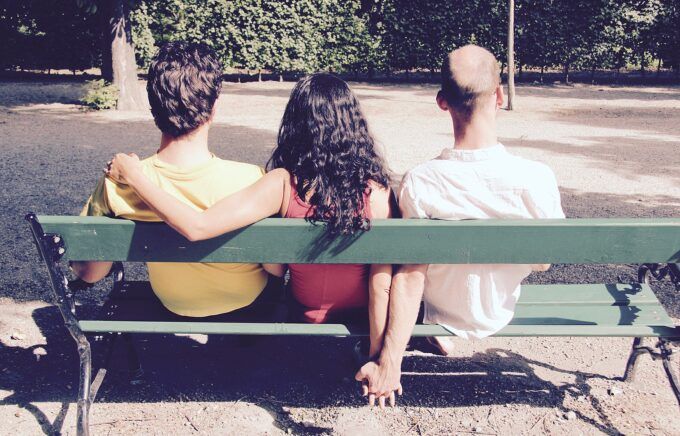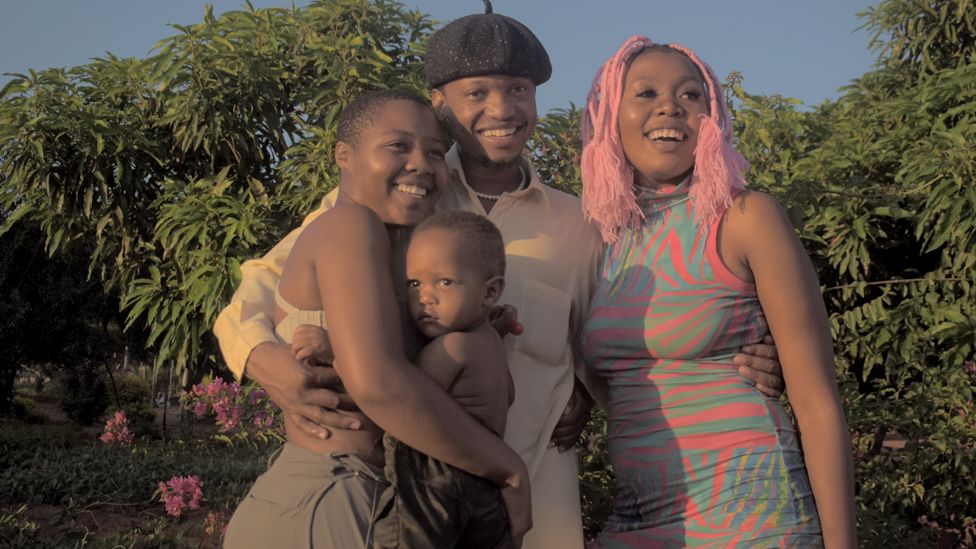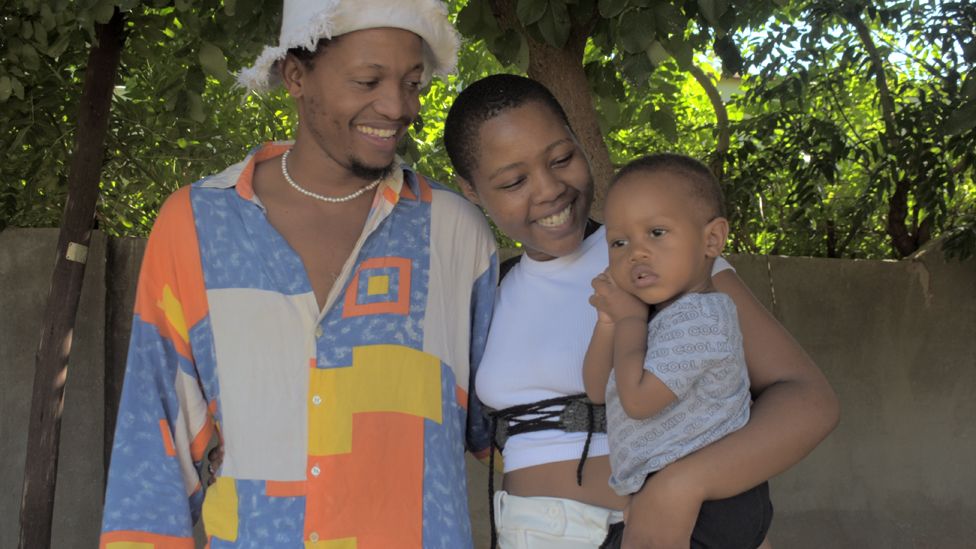Polyamory: Sex, Love and the Family

The picture shows three people in a polyamorous relationship. It was taken within a research project at the University of Vienna titling “Polyamory in media, social and identity perspective” – CC BY-SA 4.0
Since the nation’s founding, individuals, religious groups and radical communities have challenged conventional morality. They have contested the dominant form of monogamous, heterosexual sexuality and the patriarchal nuclear family.
In 2021, only 18 percent – or 23 million — of U.S. households were “nuclear families” with a married couple and children. This is a significant drop from nearly 60 percent during the 1970s. According to one estimate, 19 percent of Americans have been involved in sexual threesomes and in 2019 “polyamory” was practiced by 4 to 5 percent of Americans. In addition, 20 percent have attempted some kind of ethical non-monogamy relationship. The term “polyamory” links the Greek poly to the Latin amor becoming “many loves,” and describes a variety of romantic or intimate non-monogamous relationships.
Traditional morality has long been challenged. Often forgotten, between 1852 to 1890, about 20 to 30 percent of Mormon families, members of Church of Jesus Christ of Latter-day Saint, practiced a form of polygamy they called “plural marriage.” In addition, for much of the 19th century, “free love” advocates and other sexual radicals battled with what was known as the “social purity” movement over sex and the nature of the family.
Among the most notable free love communities of the pre-Civil War era were: New Harmony, a secular utopian community in Harmonie, IN, founded by Robert Owen; the Brook Farm community in West Roxbury, MA, founded by George Ripley; the Oneida community in NY founded by John Humphrey Noyes; and the interracial Nashoba community in eastern Tennessee founded by Frances Wright, her sister, Camilla, and Robert Dale Owen.
A second wave that challenged traditional family values emerged during the 1920s. This threat was represented by the “new woman” who symbolized the modernization that threatened social purists. And the Prohibition-era speakeasy was the nexus of this new erotic experience.
Having a drink at a speakeasy was an act of transgression: One was committing a crime. When one entered a speak, one crossed the line between the socially acceptable and the illegal and, for many, the immoral. Prohibition also gave rise to the “sex circus,” infamous venues of alcohol consumption and sexual liaison, be it heterosexual and/or homosexual erotic indulgence.
The 1960s forged a counterculture that challenged – and changed! — American values. It was the decade characterized by the oral contraceptive pill, the mini skirt, rock-&-roll, long hair and the growing use of marijuana, LSD and other “psychedelic” drugs. It sparked a “sexual revolution” involving premarital sex and “free love,” often involving mate swapping, group sex and homoeroticism.
It saw the Sexual Freedom League host orgies at a home in Berkley, CA. One estimate found that between September 1966 and the League’s final 1967 Christmas Eve party, over 1,200 people attended their orgies. A second example of this insurgent sexuality was the Sandstone Retreat. Founded by John and Barbara Williamson in 1969, it was located in the hills of Topanga Canyon, just north of Los Angles. It was a unique experiment in erotic exploration that drew a fairly wide and often distinguished following among “free love” advocates.
By the 1970s, with the passage of Civil Rights legislation, the end of the Vietnam War, the rise of the new Christian right represented by Phyllis Schlafly’s defeat of the Equal Rights Amendment (ERA), the ‘60s counterculture dissipated. However, its challenge to traditional monogamous sex and marriage persisted among the “polyamorous.”
Polyamory emerged in New York in the 1950s when John Peltz “Bro Jud” Presmont formed the polyamorous religious community, Kerista. It embodied the notion of “polyfidelity,” non-monogamous romantic relations among equal partners. During the 1960s, Kerista-inspired storefronts and communal houses operated in New York, Los Angeles, Chicago and the San Francisco Bay Area. It drew admiration from Allen Ginsberg, among others.
Kerista groups consisted of up to twenty-four people dubbed “best friend identity clusters” (B.F.I.C.); discouraged romantic attachment and possessiveness; and two people slept together in a shared bed, but on a rotational sleeping schedule, insuring equal bonding time among B.F.I.C. members of the opposite sex.
Other key figures of the evolving polyamory movement included Oberon (Timothy) Zell (aka Otter G’Zell and Zell-Ravenheart) who founded the Church of All Worlds (CAW), a neo-Pagan group, and the publication, Green Eggs, that promoted polygamous relationships based on the notion of personal divinity. Fred Adams established Feraferi (i.e., “Celebrate Wildness”), a neo-Pagan community that began in Southern California into Goddess worship. In time, CAW partnered with Feraferi to form the Council of Themis and, by the late-70s, some thirty groups were members.
Two women who kept the movement’s spirit alive over the last few decades are Ryam Nearing and Deborah “Taj” Anapol. Nearing lived outside of Eugene, OR, with her two “husbands.” In ’86, she established Polyfidelitous Educational Productions, a nonprofit group that hosts a conference (i.e., pepcon), “a networking weekend filled with workshops, films, games, dancing, and discussion groups.” Anapol was a “polyamorous clinical psychologist,” who advocated of erotic spirituality. She co-founded (with Nearing) the magazine, Loving More in 1994. She is the author of Polymore: The New Love Without Limits (1997) and Polyamory in the 21st Century (2010), among other works.
Polyamory has gotten a good deal a media attention, including print and TV/online stories. To learn more about the polyamory movement, check out The Ethical Slut by Dossie Easton and Janet W. Hardy (1997), a sex-positive guide colloquially known as “the poly bible”; Elizabeth Sheff‘s The Polyamorists Next Door (2023); and Christopher Gleason, American Poly: A History (2023).








